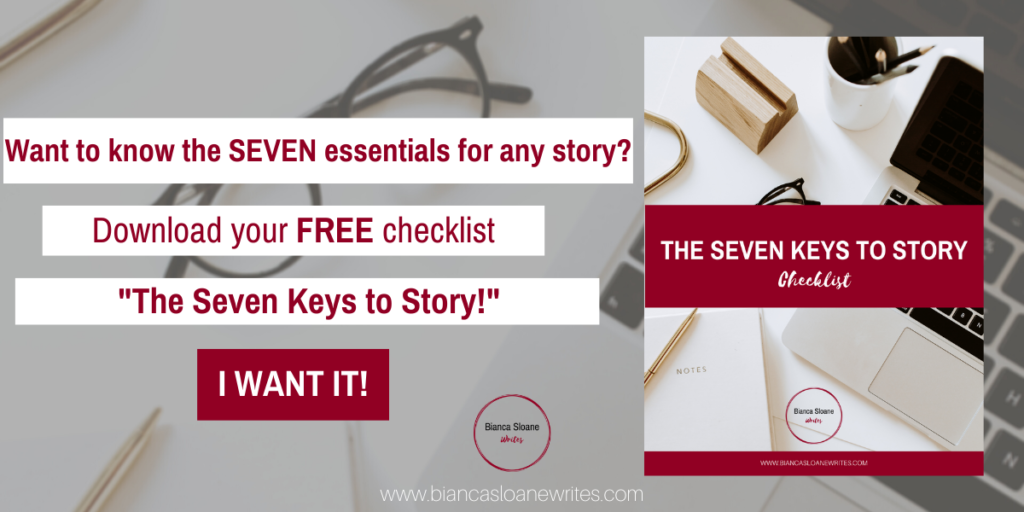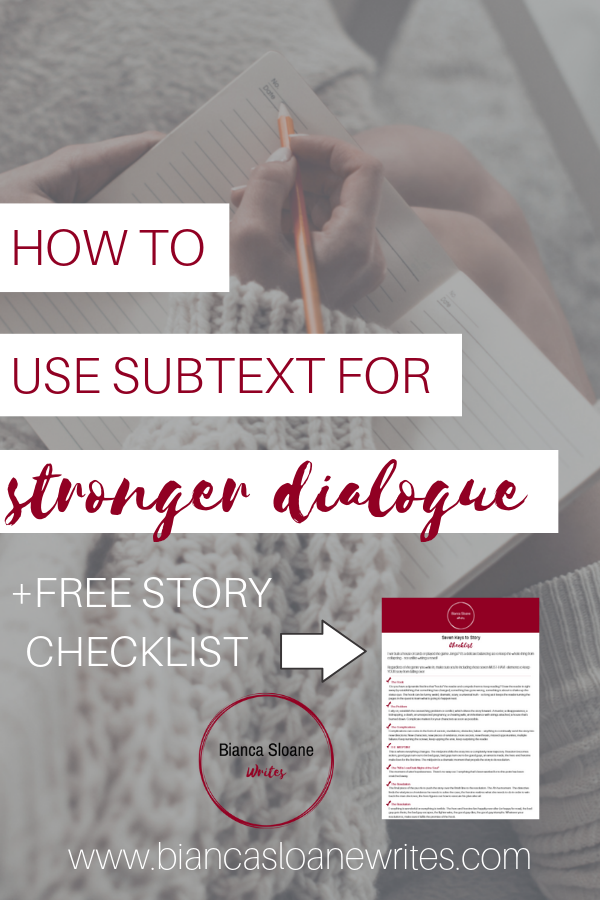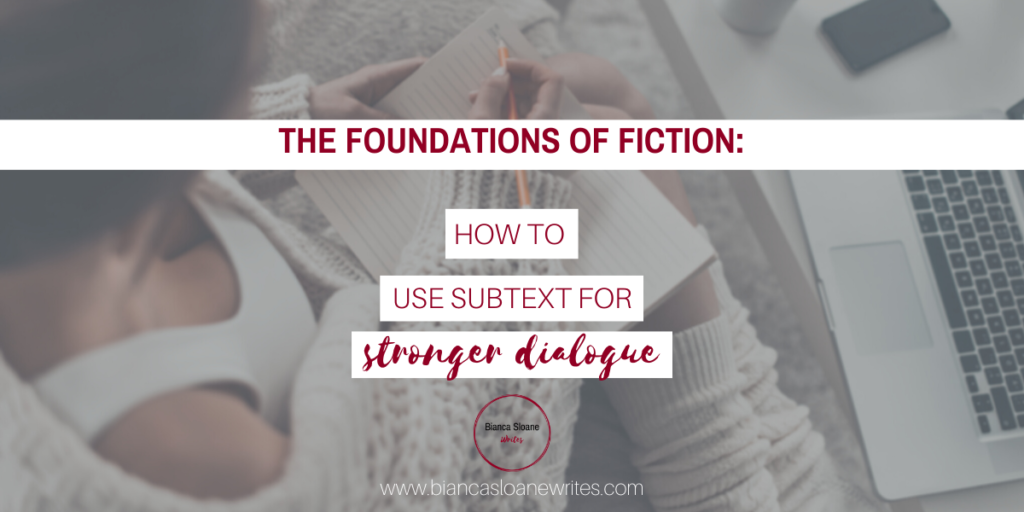Foundations of Fiction: How to Use Subtext for Stronger Dialogue
Dialogue. One of the most important foundations of fiction yet one of the most neglected. Partly because no one understands what its function is. Partly because it’s viewed as a catch-all to cure the ills of a manuscript (“You should really add some dialogue here, here and here.”)
In this installment of the Foundations of Fiction: Dialogue, we’ll discuss SUBTEXT.
(read Foundations of Fiction: Dialogue on CONFLICT)
(read Foundations of Fiction: Dialogue on REVEALING CHARACTER)
First, a quick review of the function dialogue serves in a story:
- To propel the story forward
- To reveal character
It is NOT:
- A dumping ground for exposition
- A dumping ground for mindless chit chat
- Meant to sound too realistic

Subtext means to read between the lines. What is someone saying without them saying it outright? Not only do we want our overall story to contain subtext, we want our dialogue to be rich with it. If characters always say what they mean and mean what they say, it gets boring pretty fast.
Watching (or reading) a verbal tennis match is way more interesting when we have to dig a little beneath the surface to really get at the heart of what the characters mean, what clues they’ve dropped, the innocuous statements that whip the story into a new direction, the subtle turn of phrase, or smug retort. The excitement, poignancy, intimacy . . . entertainment that subtext gives your dialogue will serve your story and your characters in immeasurable ways.
Subtext is a tough one to master because, much like adverbs, we’re afraid that if our characters don’t explicitly say what they mean, our readers won’t understand what the author means. So, we default to spilling all the tea, hitting the reader over the head with the exact, absolute, definitive, there’s-no-mistaking-what’s-being-said-here dialogue exchanges.
The truth is, readers want some things left to interpretation. Gives the imagination something to do 😉
So, what does subtext look like in action?

One of my favorite TV shows of all time is “ER,” and hands down my favorite (isn’t it everyone’s?) storyline is the long goodbye of Dr. Mark Greene. His last scene in the ER is rife with so much amazing subtext (conflict, too, though it’s subtle), it’s pretty much a four-minute plus master class on “How to Write Effective Dialogue.”
Here are some snippets of subtext from Greene’s final bow in the ER. Can you figure out what’s being said without it being said?:
****************************************************************
Greene: (to the little girl he’s just treated) Thank you, Katie.
Katie: What did I do?
Greene: You just became my very last patient.
Katie’s Father: Shift over?
Greene: Yeah.
*******************************************************************
Abby: “Good night, Dr. Greene.
Green: “Goodbye.”
******************************************************************
Carter: (After Greene rounds the patient board with him at the end of Greene’s shift) Anybody actually sick?
Greene: Just the doctor.
******************************************************************
Now, regular viewers know Mark has a fatal brain tumor. He’s made the decision to stop all treatment, quit his job, and spend his final days with his family rather than cooped up in the ER. If you watched this scene, without knowing anything else, you would definitely get the sense that something is wrong with Mark, and because of that, he won’t be coming back to the ER. Except you wouldn’t know what or why. But . . . you’d keep watching to uncover the mystery.
For the regular viewer who watched Mark’s journey – his initial diagnosis, finding love with Corday following a painful divorce, his successful brain surgery, his daughter being born, his struggles with his older daughter, eventual relapse, the hopeful, yet ultimately hopeless attempts at treatment, and the subsequent realization that he was indeed dying – these exchanges carry even more agonizing weight. We have to see Mark’s story through to its heartbreaking end.
The writers could have decided to show countless scenes of his colleagues parading in and out of his hospital room, or visiting him in hospice, full of weeping histrionics, and every other character uttering, “fatal brain tumor” like a drinking game (compare that to Samantha’s diagnosis on “Sex and the City,” where every other word was “cancer.”) By injecting subtext into Greene’s final exchanges with his friends, patients and colleagues, we get a quietly affecting scene that has us reaching for the Kleenex.

How do these brief dialogue exchanges propel the story forward? We want to see how Mark spends his final days. Does he resolve his problems with his eldest daughter before he dies? What are his final words? How does his death impact his friends and colleagues? His family?
How does it reveal character? Slipping out of the ER without any fuss is exactly who Mark is. He wants to no fanfare. No sobbing hysterics. His priorities are his family and living out his final days on his terms and no one else’s.
Here’s the scene. Study it. Pull it apart and examine how the use of subtext in the dialogue makes for a nuanced, heart-tugging sequence of events:
The Takeaway: Resist the temptation to be explicit in your dialogue. Shroud conversations in a bit of mystery. Refrain from having your characters say what they mean and mean what they say. Look for opportunities to imbue dialogue with dual meanings and unique phrasing that gives your exchanges life. Avoid hitting your readers over the head with a sledgehammer in an attempt to make them understand what you want to say. Readers are smart. They can read between the lines.
What are some examples of subtext in dialogue that you like?


